Edinburgh-Dundee-Perth
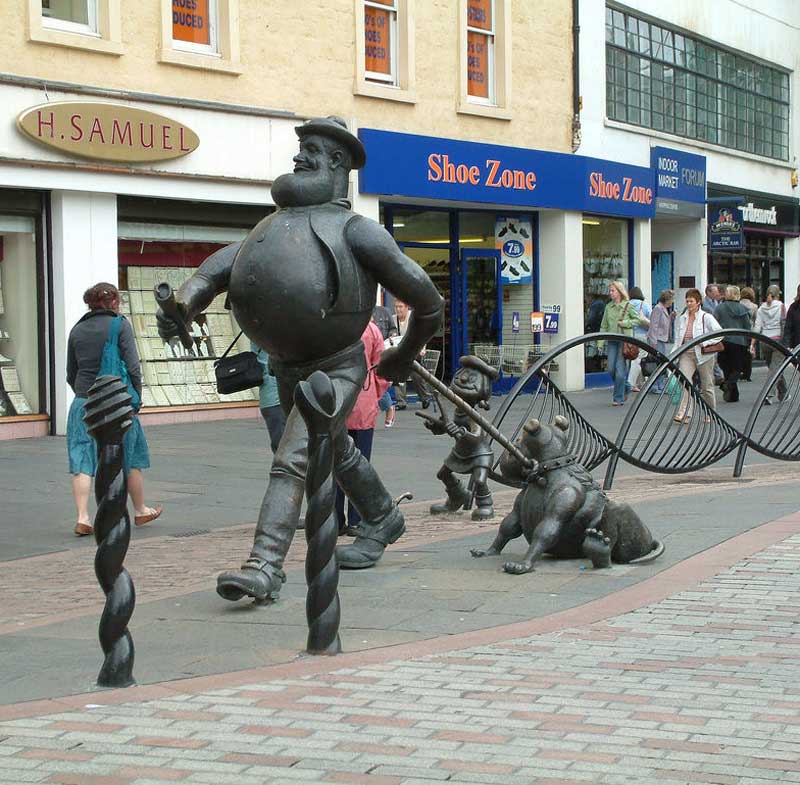
Dundee, Scotland
Riding the rails from Edinburgh up the coast to Dundee, inland to Perth and then back to Edinburgh is one of the best ways to sample a little bit of Scotland in a single day train journey from the Scottish capital. The journey includes passing over one of the most iconic railway bridges in the world - the Firth of Forth railway bridge, see Edinburgh's coastline from the other side of the Forth estuary, visiting two of Scotland's more well known regional cities, and an opportunity to include Glasgow into the day's sightseeing if you leave early enough in the morning and don't mind returning to Edinburgh after dark.
If you're happy to leave Glasgow out of your itinerary, by starting your day's outing early, it is possible to stop off at other towns on the way. Trains run every 30 minutes throughout the day between Edinburgh and Dundee; every hour from Dundee to Perth; twice every hour from Perth to Edinburgh; twice every hour Perth to Glasgow; four times each hour Glasgow yo Edinburgh.
Travel Times
Edinburgh to Dundee: 1 hr 7 mins or 1 hr 19 mins
Dundee to Perth: 21 mins
Perth to Edinburgh: 1 hr 12 mins or 1 hr 40 mins
Perth to Glasgow: 1 hr or 1 hr 20 mins
Glasgow to Edinburgh: 50 mins
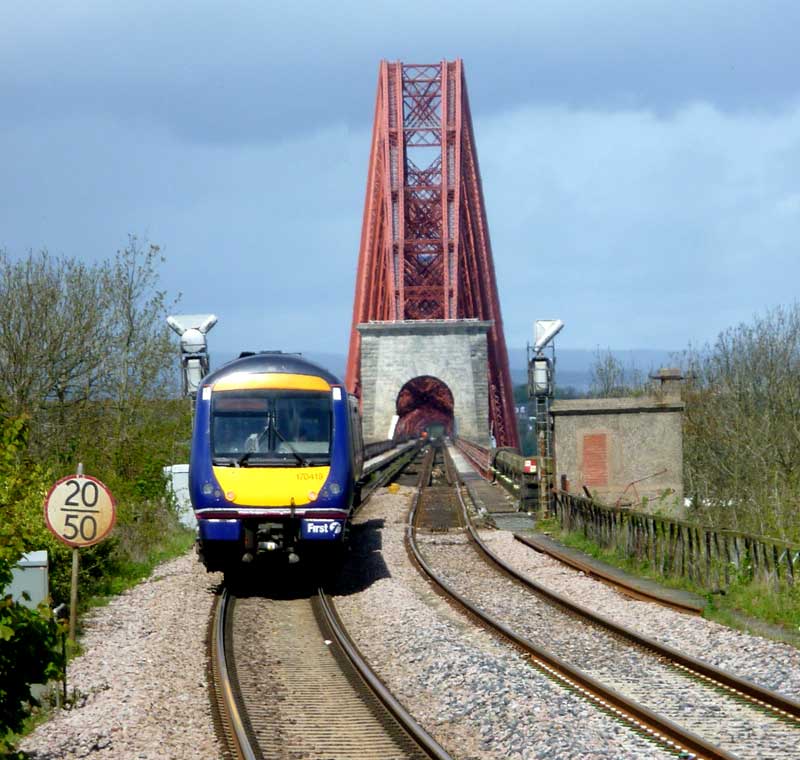
Firth of Forth railway bridge
Plan and Book:


The Journey
I've always been fascinated by the Firth of Forth railway bridge, which was the first major structure in Britain to be constructed of steel; its French contemporary, the Eiffel Tower, was built of wrought iron. You can view this totally over-engineered cantilever bridge from the town of Queensferry when we were last in Scotland, or take this journey and actually ride across it. For train travellers the bridge is the doorway from Edinburgh to all places north.
After crossing the Firth of Forth railway bridge one expects the train to head north across the countryside but it doesn't - it follows the coast on the north side of the Firth of Forth. You can see the City of Edinburgh quite clearly on the far shore as you head towards Aberdour. At Aberdour the village's winding High Street lies a little inland from the coast. Narrow lanes run off it, providing access to the more hidden parts of the village and the shoreline itself.
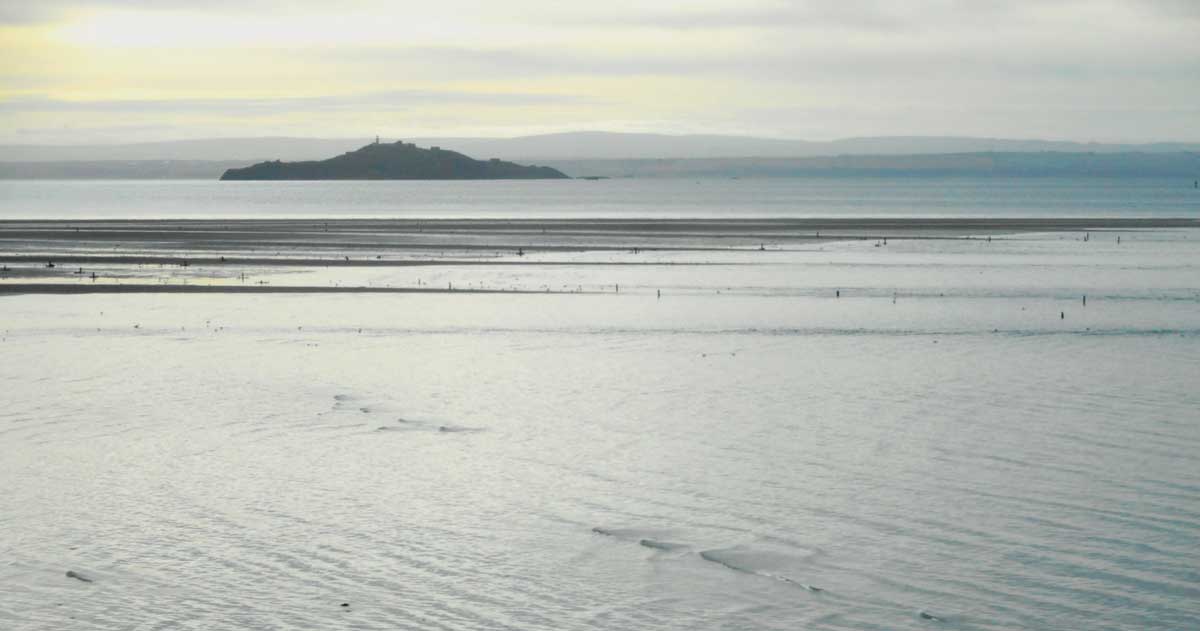
In the late 19th century, Aberdour Harbour became a popular destination for pleasure steamers from Leith. Aberdour Castle started life as a modest hall house on a site overlooking the Dour Burn in the 13th century. The oldest part of the present semi-ruin constitutes one of the earliest surviving stone castles in mainland Scotland.
The next town you passed through is Burntisland, a royal burgh and parish in Fife, on the shore of the Firth of Forth. It is known locally for its sandy Blue Flag beach, the 15th-century Rossend Castle, and its traditional summer fair and Highland games day. To the north of the town a hill called the Binn is a landmark of the Fife coastline; a volcanic plug, it rises 193 metres above sea level. Burntisland is home to the second oldest highland games in the world starting in 1652. The Games take place on the third Monday of July, the start of the Fife/Glasgow fair fortnight, and a local market and summer fairground takes place on the same day. Immediately to the west of Burntisland railway station lies the 9-span Viaduct forming a significant feature in the harbour area of the town. Built in 1888 to carry the main railway line from Edinburgh to Dundee, it is now a Category C Listed structure, being a rare example of a surviving Town truss.
10 minutes up the line Kirkcaldy is the largest town on the Fife coast and the eleventh-largest locality in Scotland. The town is a major service centre for the central Fife area and a popular place among people who work in Edinburgh but prefer the country life. It is the home of the longest street fair in Europe, with over 200 fairground rides and attractions, held each Easter on the town esplanade.
You can take a walk along the beach or enjoy the woodland walks and formal gardens at the Beveridge Park. Ravenscraig Park is located in the east of the town. Connecting up to the Fife Coastal Path, it is home to the ruins of Ravenscraig Castle. The Castle was begun for Queen Mary of Gueldres in 1460, but its time as a royal residence was short-lived, and the castle was soon granted to the Sinclair family. The Sinclairs completed the castle, building its massive 3.5m-thick walls, showing the impact of gunpowder artillery on castle design.
Dundee
Dundee is one of Scotland's larger rural cities, and it is a pleasure to spend an hour wandering around making yourself familiar with the place. Dundee is promoted as 'One City, Many Discoveries' in honour of Dundee's history of scientific activities and of the RRS Discovery, Robert Falcon Scott's Antarctic exploration vessel, which was built in Dundee and is now berthed in the city harbour. Also on Dundee's regenerated waterfront is the 19th-century warship, HM Frigate Unicorn, now a museum.
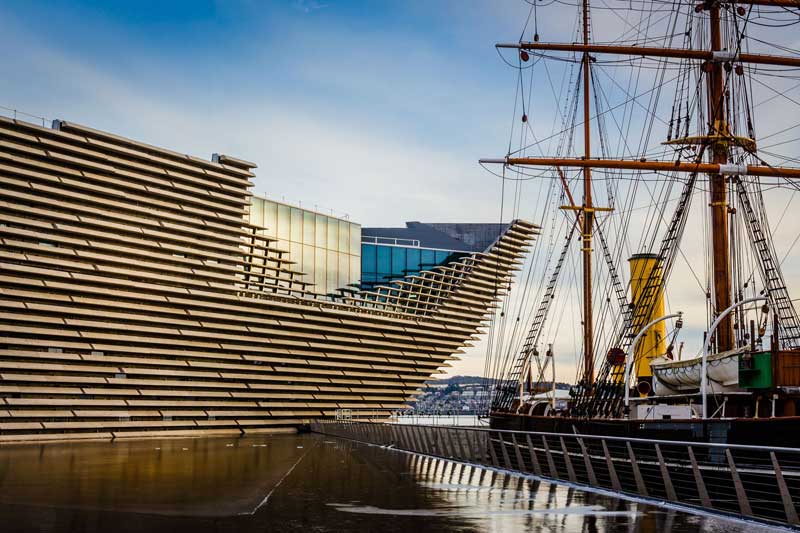
RRS Discovery, Dundee
North of the water, Verdant Works is a museum celebrating the city's jute-manufacturing heritage. The McManus: Dundee's Art Gallery and Museum displays art and archaeological finds. Situated just four miles to the east of Dundee city centre lies the seaside suburb of Broughty Ferry. Known as "the jewel in Dundee's crown", its fine esplanade and sweeping sands provide the perfect place for a relaxing stroll or a quiet picnic.
Perth
Have grown up in Perth, Western Australia, and spent many years of our lives there, I was quite eager to experience the city after which my former hometown had been named the first time I went therre. I was not disappointed. Like the other rural cities of Scotland, Perth is not large and has a pleasant feel to it. A former capital of Scotland, the city s steeped in Scottish history. Located alongside Scotland's longest river, the Tay, Perth is recognised as one of Scotland's premier culinary centres, cafes and restaurants are plentiful with a wide range of cuisine on offer. The people in the regional Scottish areas take great pride in using as much local produce as possible, and why wouldn't they when it is of such a high quality and taste.
The presence of Scone Abbey, home of the Stone of Destiny where the King of Scots was crowned, enhanced the early importance of the city. Perth became known as a 'capital' of Scotland, due to the frequent residence of the royal court. Royal Burgh status was soon given to the city by King William the Lion in the early 12th century. The city became one of the richest burghs in the country, doing trade with France, the Low Countries and Baltic Countries for goods such as Spanish silk and French wine. Today, Perth serves as a retail centre for the surrounding area. Due to its location, the city is often referred to as the Gateway to the Highlands. Perth remains a key transport hub for journeys by road and rail throughout Scotland.
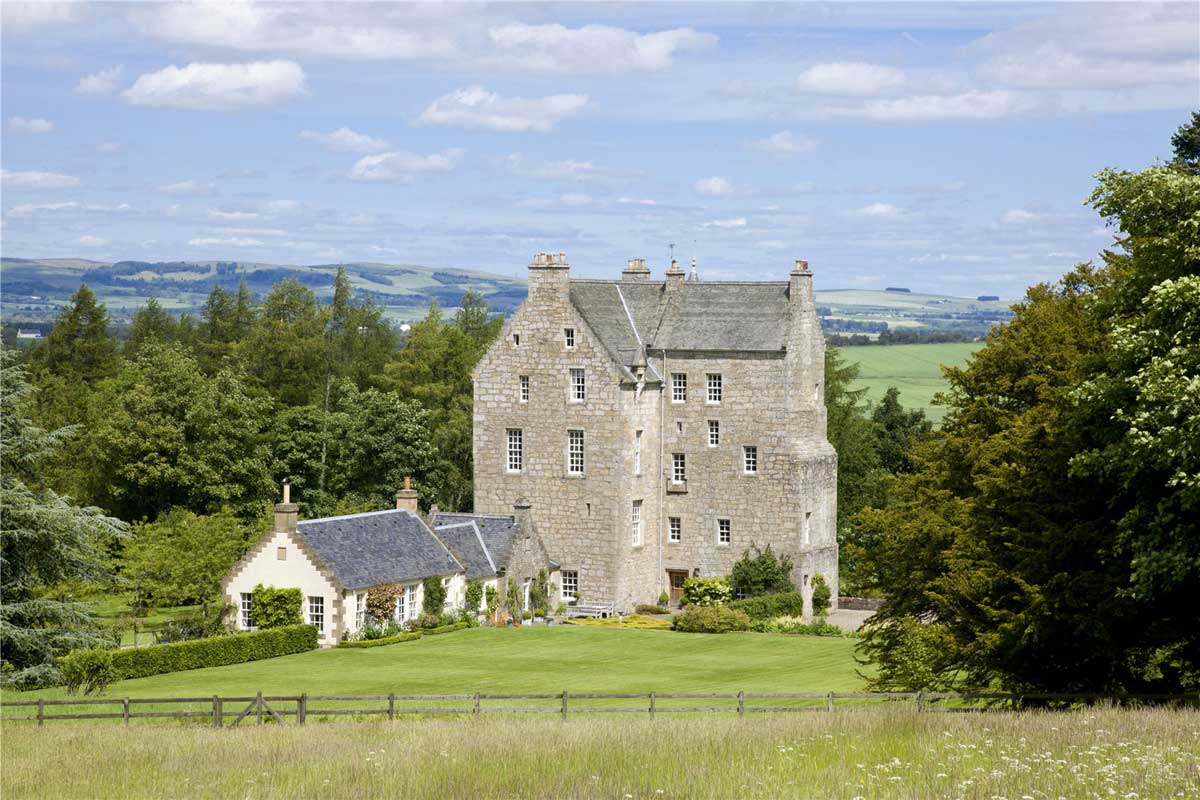
A country manor near Kingseat, one of the pretty villages between Perth and Edinburgh
From Perth, you can either take a train direct to Edinburgh through some very pretty countryside, or if time permits, make a detour to Glasgow. Having visited Dundee and Perth already, there will not be a lot of time to explore Glasgow. But if you are on a flying visit, and that it all the time you have, then it is enough to wander around Glasgow for an hours or so, have an evening meal and head back to Edinburgh, which is about an hour away by train.
If you leave Glasgow off your itinerary, there are two ways back to Edinburgh from which to choose - via Kirkcaldy, joining up with the line you came up on at Ladybank (1 hr 12 mins), or the longer way through Stirling (1 hr 42 mins). If you are short of time, backtracking via Ladybank saves you 30 minutes, but taking the longer way allows you to see new places such as Stirling, which is well worth a visit.
Stirling
The city of Stirling is clustered around a large fortress and medieval old town, and home to many of Scotland's top attractions including Stirling Castle, Bannockburn and The National Wallace Monument. It has famously been said over the centuries "that to hold Stirling was to hold the key to Scotland", so important and significant was tStirling Castle in the history of Scotland. Here you can enter an exciting world of plots, passion and intrigue with our costumed performers. Stirling's renowned landmark, the National Wallace Monument, commemorates the life of Sir William Wallace and overlooking the scene of his greatest victory, at the Battle of Stirling Bridge, in 1297. Inside the Monument you can visit the Hall of Arms.
The Old Town Tour offers a hilarious mix of comedy, drama and storytelling with costumed local guides. Let us take you on a journey through the curious nooks and crannies of the Burgh, revealing some of Stirling's strangest tales. While in Stirling you can also see the world's oldest football at the Smith Art Gallery and Museum. Stirling is on the doorstep of Loch Lomond and The Trossachs National Park as well as a string of vibrant local towns and villages. It's worth visiting Dunblane Cathedral, Deanston Distillery or Doune Castle made infamous in recent years as the set location for Outlander. Tours to these destinations are available if you don't have your own transport.

